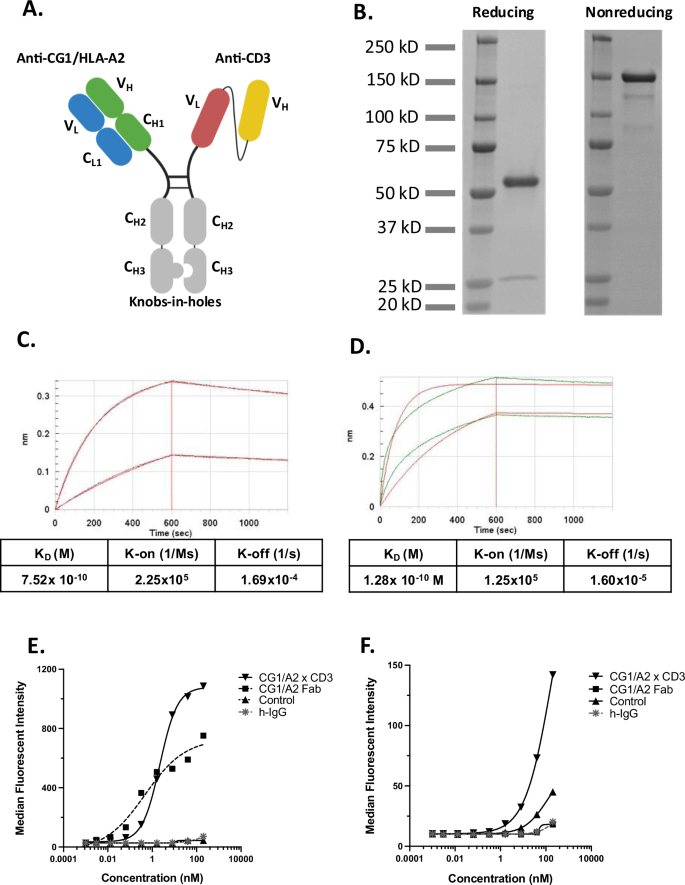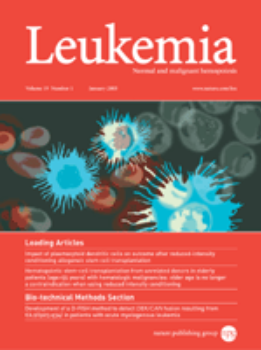Immunotherapy targeting a leader sequence cathepsin G-derived peptide
IF 12.8
1区 医学
Q1 HEMATOLOGY
引用次数: 0
Abstract
Myeloid azurophil granules provide a rich source of intracellular leukemia antigens. Cathepsin G (CG) is a serine protease that has higher expression in acute myeloid leukemia (AML) blasts in comparison to normal myeloid progenitors. Based on the unique biology of HLA-A*0201 (HLA-A2), in which presentation of leader sequence (LS)-derived peptides is favored, we focused on the LS-CG-derived peptide CG1 (FLLPTGAEA). We previously detected CG1/HLA-A2 complexes on the surface of primary HLA-A2+ AML blasts and cell lines, and immunity targeting CG1/HLA-A2 in leukemia patients. T cell receptor (TCR)-mimic (m) antibodies are immunotherapeutic antibodies that target peptide-HLA (pHLA) complexes. Here we report on the engineering, preclinical efficacy, and safety evaluation of a novel CG1/HLA-A2-targeting, T cell-engager, bispecific antibody (CG1/A2xCD3). CG1/A2xCD3 showed high binding affinity to CG1/HLA-A2 monomers, CD3-Fc fusion protein, and to AML and T cells, with potent killing of HLA-A2+ primary AML and cell lines in vitro and in vivo. This correlated with both tumor- and CG1/A2xCD3-dependent T cell activation and cytokine secretion. Lastly, CG1/A2xCD3 had no activity against normal bone marrow. Together, these results support the targeting of LS-derived peptides and the continued clinical development of CG1/A2xCD3 in the setting of AML.


靶向组织蛋白酶g衍生肽先导序列的免疫治疗
髓系嗜氮粒细胞颗粒是细胞内白血病抗原的丰富来源。组织蛋白酶G (CG)是一种丝氨酸蛋白酶,在急性髓系白血病(AML)母细胞中表达高于正常髓系祖细胞。基于HLA-A*0201 (HLA-A2)独特的生物学特性,我们重点研究了LS- cg衍生肽CG1 (FLLPTGAEA)。我们之前在原代HLA-A2+ AML母细胞和细胞系表面检测到CG1/HLA-A2复合物,并在白血病患者中检测到针对CG1/HLA-A2的免疫。T细胞受体(TCR)-模拟(m)抗体是针对肽- hla (pHLA)复合物的免疫治疗抗体。在这里,我们报告了一种新的靶向CG1/ hla - a2的T细胞参与剂双特异性抗体(CG1/A2xCD3)的工程、临床前疗效和安全性评估。CG1/A2xCD3对CG1/HLA-A2单体、CD3-Fc融合蛋白、AML和T细胞具有高结合亲和力,在体外和体内均能有效杀伤HLA-A2+原发AML和细胞系。这与肿瘤和CG1/ a2xcd3依赖性T细胞活化和细胞因子分泌相关。最后,CG1/A2xCD3对正常骨髓无活性。总之,这些结果支持ls衍生肽的靶向治疗以及CG1/A2xCD3在AML中的持续临床发展。
本文章由计算机程序翻译,如有差异,请以英文原文为准。
求助全文
约1分钟内获得全文
求助全文
来源期刊

Leukemia
医学-血液学
CiteScore
18.10
自引率
3.50%
发文量
270
审稿时长
3-6 weeks
期刊介绍:
Title: Leukemia
Journal Overview:
Publishes high-quality, peer-reviewed research
Covers all aspects of research and treatment of leukemia and allied diseases
Includes studies of normal hemopoiesis due to comparative relevance
Topics of Interest:
Oncogenes
Growth factors
Stem cells
Leukemia genomics
Cell cycle
Signal transduction
Molecular targets for therapy
And more
Content Types:
Original research articles
Reviews
Letters
Correspondence
Comments elaborating on significant advances and covering topical issues
 求助内容:
求助内容: 应助结果提醒方式:
应助结果提醒方式:


